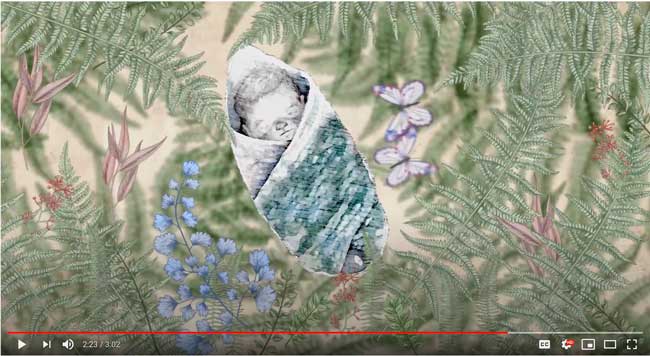
With Art and Science, Two Women Are Reviving Uttarakhand’s Nutritional Delicacies
Tanya Kotnala, an illustrator and Tanya Singh, a nutritionist joined hands to form Bhuli (which means ‘Little Sister’ in the native dialect of Garhwali), last year with the intention of reviving the local art and culture of the state. | Read the full story and view more images here >>
As more people migrate to cities and towns in search of better employment and education opportunities, one tends to take up food habits that are convenient and less time-consuming.
And when migration doesn’t involve just individuals but families as a whole, much of the native culinary practices that a village or town had to boast about, often gets lost somewhere as time passes by.
Sadly, this is the story of most villages in India that have bid adieu to not just its people but its age-old regional cuisines that were high on nutritional values too. […]
“It was sometime during this time that a local preparation named lungdi somehow cropped up in my mind. When I had inquired about its recipe with my family members and friends, most had little or almost no recollection of the dish! This led to research into the various culinary practices of Uttarakhand, while the nutritionist in me sought out the benefits,” she laughs.
While much of these preparations are crafted out of seasonal crops, Singh sheds light on the importance of nutritional content in these native vegetables and fruits.
“There is a reason why such crops are called seasonal. They are meant to be consumed at a particular time of the year. If one tries to draw a parallel with cities, one will find vegetables and fruits being available almost round the year,” Singh adds.
To help more people know of the nutritional local delicacies of Uttarakhand, the duo decided to release a series of informative illustrations in the first week of September. […]
Source: “With Art and Science, Two Women Are Reviving Uttarakhand’s Nutritional Delicacies by Lekshmi Priya S (7 September 2017)
URL: https://www.thebetterindia.com/114669/uttarakhands-nutritional-delicacies-revived-through-art-bhuli/
Date visited: 9 September 2020
[Bold typeface added above for emphasis]
“The tribal households traditionally had a backyard garden that had multiple, multilayered and multipurpose indigenous trees, plants, herbs, and shrubs. […] The produce from this small garden was sufficient to meet the dietary and nutrition needs of a family for an entire year.” – Learn more about food crops that are resistant to pests, grow on poor soils, flourish under changed climatic conditions and offer high nutritive value | Food distribution >>
The tribal food basket has always been diverse and nutritious, including maize, minor millets like kodo and kutki, oil seeds like ramtila, along with fruits, leaves, rhizomes, mushrooms, meat and fish. […] We have pushed them out of their complementary relationship with ecology, way of life and time-tested nutrition >>

Watch “The Good Ancestor – The Legacies We Leave” (3 min.): An animation that explores the legacies we might leave for future generations >>
Links to some of the most important organisations, thinkers and doers that are leading the way and that have inspired the book The Good Ancestor by Roman Krznaric >>
Related posts
- As obesity and diabetes spread “like wildfire” throughout India, traditional foods can make a difference: Tribal elders enjoy better health thanks to a more balanced diet
- The Food Book of four communities in the Nilgiri mountains: Gudalur Valley – Tamil Nadu
- Uttarakhand
- Video | Living with the cycles of nature and understanding that it is bountiful: National award winning documentary “I Cannot Give You My Forest” – Odisha
- Wild food festivals & Slow Food Youth Network (SFYN): The world’s most important food movement
- Women business
- “Woodsmoke and Leafcups”: A book that opens up the full joy of tribal life without romanticisation – Bastar